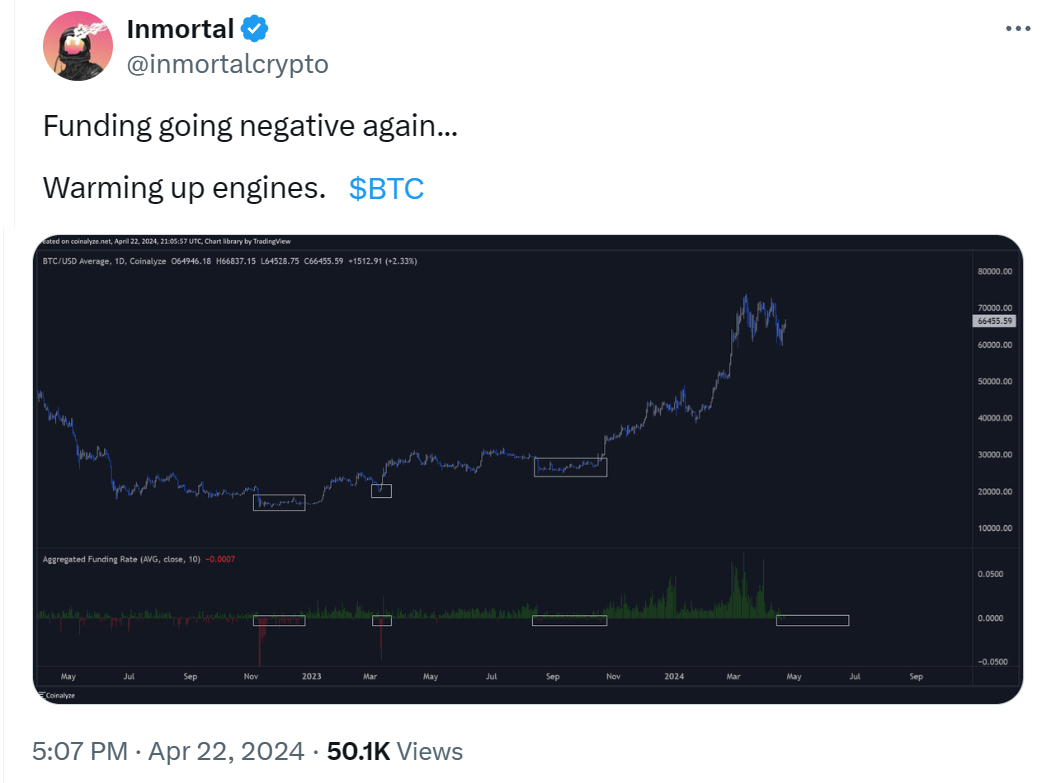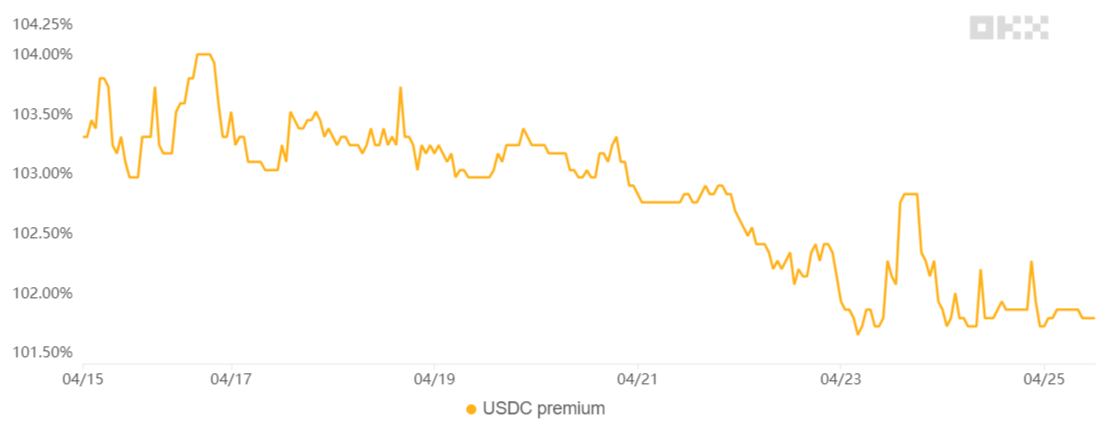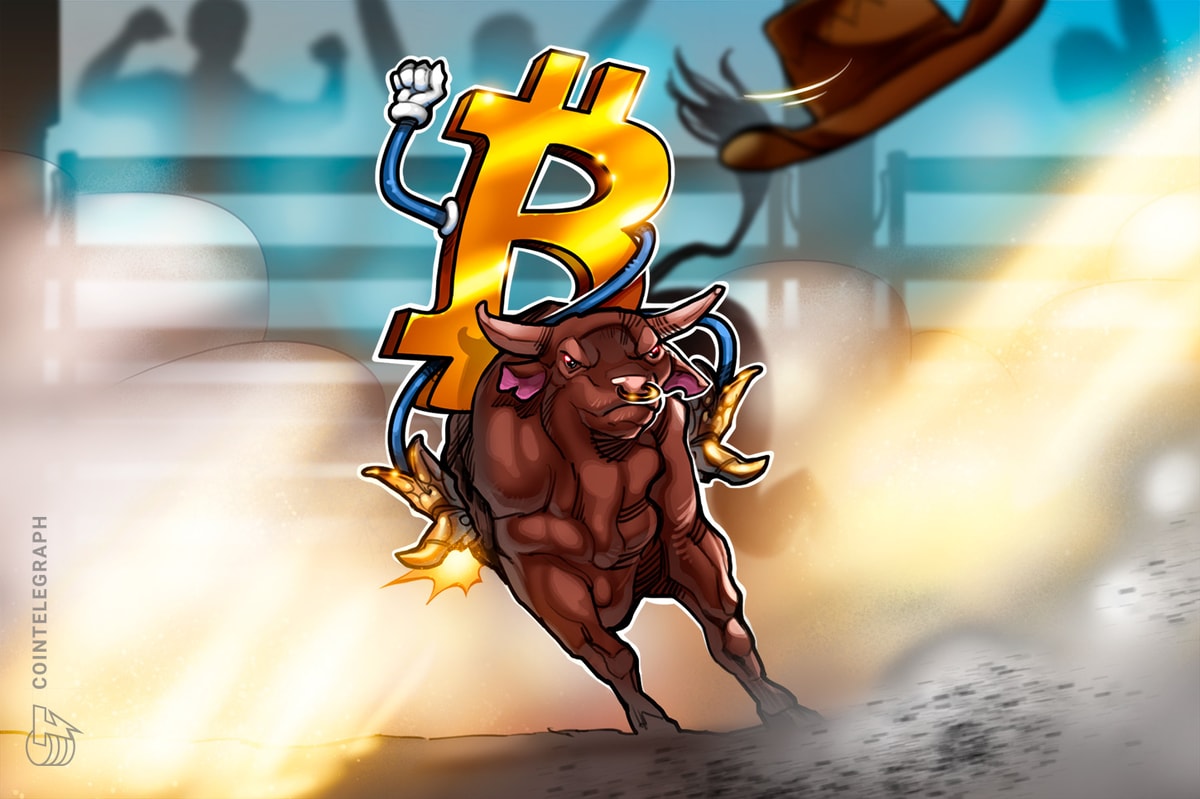The demand for leveraged buyers using Bitcoin (BTC) perpetual futures has dropped to its lowest levels in over six months, a trend some analysts consider extremely bullish. However, the BTC futures funding rate, which measures the demand between longs (buyers) and shorts (sellers), is greatly influenced by past performance, as historical data indicates.
Letâs dig in to whether or not Bitcoinâs flat funding rate is a sign of a buying opportunity.
The Bitcoin funding rate is often a backward-looking metric
Bitcoinâs funding rate fee is implemented by exchanges to manage the use of leverage since every trade involving perpetual contracts requires a buyer and a seller of equal size. When buyers are more aggressive, the funding rate becomes positive, indicating that they are paying for the use of leverage. Essentially, one side compensates the other, ensuring the exchange does not hold exposure risk.

Inmortal's post on the X social network attempts to link periods of negative funding rates with preceding bull markets. While there's no issue with conducting backtests and employing historical data, these periods ranged from a few days to over two months. Moreover, external factors may have influenced the price increases and subsequent reversals in the funding rate.
For instance, the intervention of Silicon Valley Bank (SVB) on March 23, which was holding $3.3 billion in USD Coin (USDC) reserves, adversely affected Bitcoin's funding rate. However, once U.S. authorities announced measures to protect investors' deposits, Bitcoin's price regained the $24,000 support level, and the funding rate turned positive. Therefore, relying solely on a single metric to establish cause and effect is not very effective.
Similarly, the funding rate increase in October 2023 occurred alongside a significant event for Grayscale Investments, which won approval to launch a spot Bitcoin ETF despite opposition from the U.S. Securities and Exchange Commission (SEC). On October 23, federal Judge Neomi Rao criticized the SECâs decision as âarbitrary and capricious,â noting the regulator's failure to justify how Bitcoin was different from similar financial products.
Bitcoinâs performance relative to goldâs helped to instill bearishness
Regardless of the outlook for Bitcoin's price in 2024, it's clear that BTC has struggled to maintain bullish momentum since April 12. Some analysts suggest that the brief surge above $72,000 on April 8 signaled a double-top formation, indicating a bearish trend. The subsequent drop below $60,000 on April 17, coinciding with escalating conflicts in the Middle East and a surge in gold prices to record highs, has bolstered the confidence of bearish traders.
The diminished inflows into spot Bitcoin ETFs have also dampened the enthusiasm for leveraged BTC long positions. Given that institutional investors were a major driver of Bitcoin's rally in March, it's logical to anticipate a decrease in demand for leveraged longs as market conditions shift. Consequently, the BTC funding rate is more a reflection of recent price movements rather than a predictor.
Related: SEC reviews new rules for Bitcoin options trading
To determine whether the reduced interest in leveraged long positions reflects broader market sentiment, it is useful to analyze the demand for stablecoins in China. Typically, excessive retail demand for cryptocurrencies leads the stablecoin to trade at a premium of 1.5% or higher compared to the official U.S. dollar rate, whereas bear markets result in a discount.

The USDC premium in China has maintained levels just above the 1.5% neutral threshold, subtly challenging the data from BTC futures funding rates. From one perspective, bulls can take comfort in knowing that the decline to a $59,700 low on April 17 did not push Asian investors into a state of panic. This observation supports the idea that the BTC funding rate might eventually rise as trader confidence returns, rather than the reverse.
This article does not contain investment advice or recommendations. Every investment and trading move involves risk, and readers should conduct their own research when making a decision.
